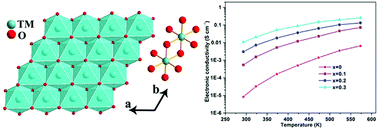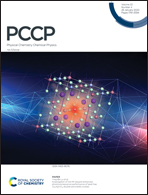Evidence for the influence of polaron delocalization on the electrical transport in LiNi0.4+xMn0.4−xCo0.2O2†
Abstract
Polaron delocalization in layered transition-metal oxides can considerably impact their physical properties and technological applications. Herein, we present the evidence for the influence of polaron delocalization on the electrical transport of layered oxides LiNi0.4+xMn0.4−xCo0.2O2, an active cathode material, by controlling the chemical compositions. We find that the chemical composition at x = 0.3 exhibits a sharp increment in electronic conductivity of four orders of magnitude at room temperature with respect to that at x = 0. We attribute the increased electronic conductivity to a low hopping energy in addition to a weak electron–phonon interaction. The weakened electron–phonon interaction is the source of polaron delocalization in LiNi0.4+xMn0.4−xCo0.2O2, which became improved with increasing x due to the increased polaron sizes. Moreover, it is also suggested that the polaron delocalization may have a relationship with the strong Jahn–Teller distortion induced by Ni3+. The analysis of temperature dependent electrical transport within the framework of the small polaron hopping conduction model enables us to comprehend the influence of polaron delocalization on the electrical transport pertinent to the applications of layered oxide materials.



 Please wait while we load your content...
Please wait while we load your content...